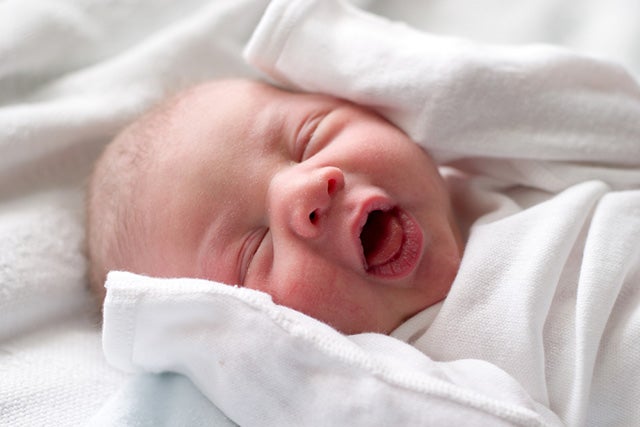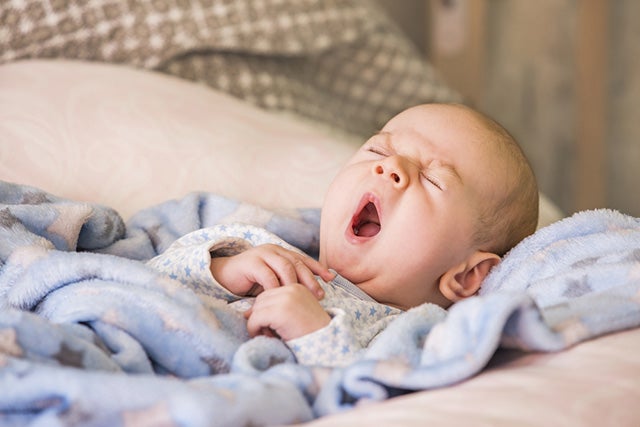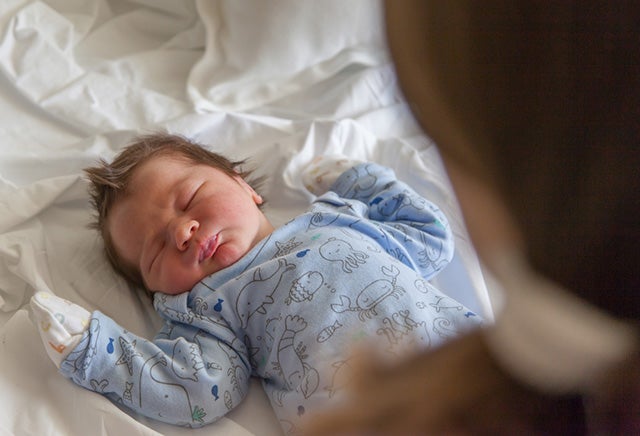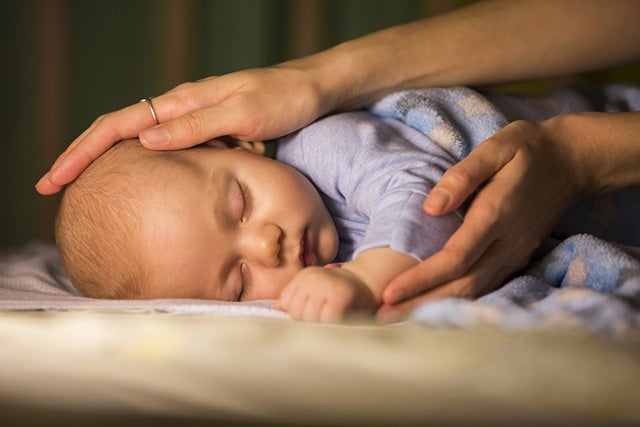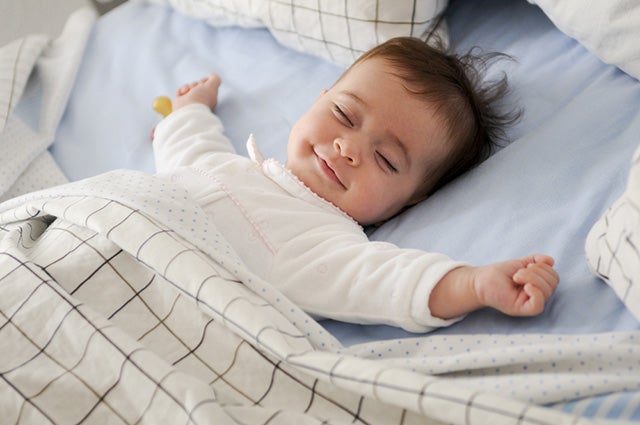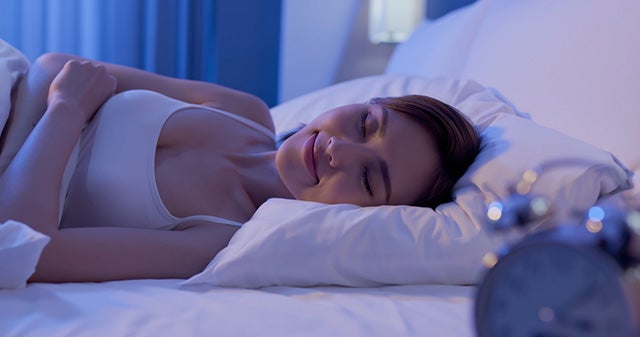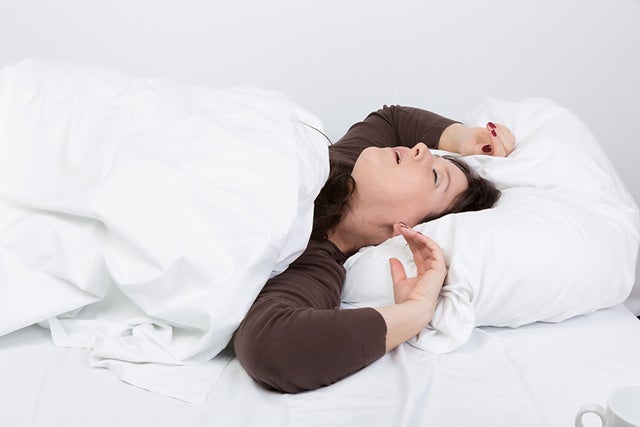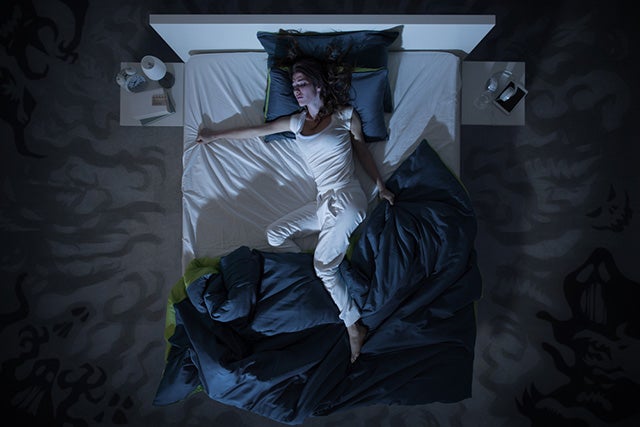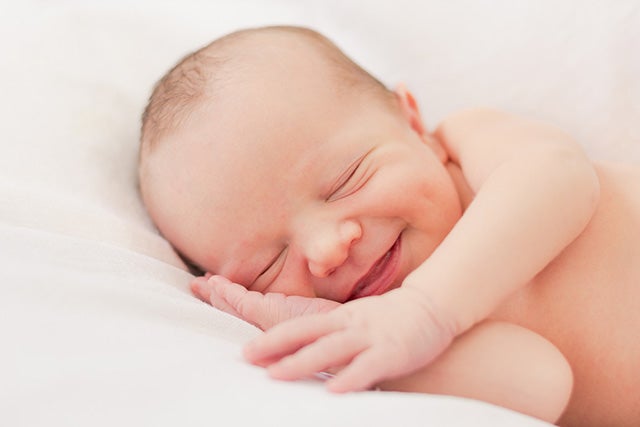Have you ever noticed your child smile when they’re asleep and wondered what they’re dreaming of, or perhaps why they do so? Laughing while you’re asleep is a phenomenon called hypnogely, and it happens very often with infants. Seeing your child laughing or smiling while they’re asleep is harmless and can be quite cute, but it’s not because of a dream.
Stages of Sleep
In order to properly understand what you are going through at night, you have to know the four stages of sleep everyone experiences. Babies do experience stages of sleep, but they start out with only two stages: non-REM and active stages of sleep.
Stages of Non-REM Sleep
• Stage 1
Stage 1 is relatively short. When your body finally winds down to prepare to go to sleep. Your breathing begins to slow, your muscles relax, and your brain begins to slow down. This stage of sleep does not last very long, which is why most people don’t realize when they fall asleep.
• Stage 2
The second stage is still a stage in which your body is winding down, even though you’re already asleep. Your breathing continues to slow, and your muscles continue to relax. While your brain activity does slow, there are still sporadic bursts of electrical activity. In this stage, your eye movement also begins to stop. It’s relatively easy to be awoken from this stage.
• Stage 3
At this stage, your breathing, heart rate, and brain activity are at their lowest point. In order to have a fulfilling amount of sleep, this is the stage that you need to reach in your sleep. This stage of sleep happens during the first part of the night before dreams start to kick in.
• REM Sleep
This stage is where you will most probably start dreaming. It takes about 90 minutes of sleep to reach this stage, where your eyes move rapidly underneath your eyelids. Your brain waves are now as active as they would be when you are awake, which explains why dreams happen in this stage, and why you may actually smile or laugh while you’re having the dream.
The first three stages of sleep for an infant would all fall under non-REM sleep, where your child is falling asleep, and their breathing and heart rate is slowing down. The second stage, called Active sleep, is REM sleep, where their mind is more active, and they can also end up laughing and smiling as a nerve reflex rather than a reaction to a dream.
Why Do People Laugh in Their Sleep?
Before we break down the reason why a baby laughs or smiles in their sleep, it’s important to know why we as adults can do this too.
Most of the time, laughing or smiling while you’re asleep happens during REM sleep and is a reaction to a dream. It’s relatively harmless, apart from the potential scare you could give your partner.
What is REM Sleep Behaviour Disorder?
There are two conditions you should be aware of, in case laughter during sleep is something experienced more than often. If you’re laughing during REM sleep, you could be experiencing REM sleep behavior disorders. In this case, your limbs are not paralyzed while you’re asleep, and you could end up re-enacting your dreams in your sleep.
The most severe cases are when you thrash, kick, and punch during your sleep. Your sleep behavior disorder becomes dangerous in these cases, and consultation with a sleep professional is highly recommended. People who suffer from this disorder can commonly also develop signs and symptoms of Parkinson’s Disease.
What is Parasomnia?
If you’re laughing during non-REM sleep, this could be a result of parasomnia, which is a state of being partially awake and asleep at once. Other symptoms of parasomnia are sleepwalking and sleep terrors.
Parasomnia is also known as a disruptive sleep-related disorder. This can include abnormal movements, the re-enactment of dreams, talking while you’re asleep, and strong waves of emotions. Your partner may actually believe you’re awake when you’re sound asleep in reality. You can remember some parts of the night, such as a conversation or something you felt, but otherwise, most people don’t remember anything.
Do Babies Dream?
To this day, whether or not babies actually have dreams is unsure. They have different stages of sleep, much like adults do, but there are key differences even within these stages of sleep. The equivalent of REM sleep for infants is known as active sleep, and this might be when you notice your child is smiling and laughing at night.
So, we can rule out dreams as a reason why babies smile at night.
Why Do Babies Smile in Their Sleep?
The actual believed reason behind why babies smile in their sleep is that smiles and laughter are reflexes they experience while they’re sleeping. Much like adults, babies can move involuntarily during the night while they’re completely asleep.
You may have noticed that your child twitches and jerks involuntarily in the night as well. Smiling and laughing is essentially the same thing. They’re reactions and movements your child’s body is going through at night during subconsciousness.
Another occurrence which can happen is called gelastic seizures. These are episodes of uncontrollable giggling and laughter. These episodes are short, around 10 to 20 seconds each time they happen. They can happen to infants who are at least 10 months old. These seizures happen either when your baby is falling asleep, or they happen during active sleep and wake them up.
This is only an issue if these seizures happen multiple times a day and are complimented with grunts, vacant stares, and unnatural movements.
In the End
Babies smiling while they’re asleep is more often than not an innocent reflex. They’re in less control of their movements while they’re asleep, which means their nervous system may send out signals spontaneously while unaware. So let your child smile and laugh while they’re asleep. Provided there are no complimenting side effects of grunting and discomfort, they’re in no harm.
Photo credit: Vivid Pixels/Shutterstock; Andrii Orlov/Shutterstock;
Alla Pogrebnaya/Shutterstock; Andrii Orlov/Shutterstock;
javi_indy/Shutterstock; aslysun/Shutterstock;
Stock-Asso/Shutterstock; Natalia Hirshfeld/Shutterstock;
bmf-foto.de/Shutterstock
